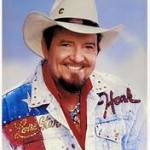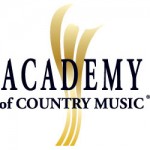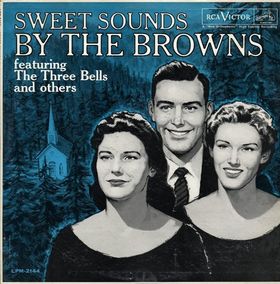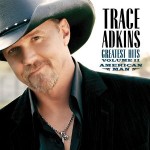
Marty Robbins



Sunday Selections: October 16, 2016
We’re only 23 days away from the election, y’all.

Sunday Selections: June 5th, 2016
Break out the eye-drops, gang, this one’s a longread!



100 Greatest Men: #54. Hank Thompson
 100 Greatest Men: The Complete List
100 Greatest Men: The Complete List
A legendary star who performed for more than sixty years, Hank Thompson stayed relevant as country music slowly moved from a regional music to a national one.

Songs For Dad
 My dad was passionate about many things, and in my memory, he’s defined by two of them: c0llecting vintage toys and loving music. Earlier today, my mother and I attended Toy Story 3. He loved the first two films, and it was a way to get closer to him in spirit this Father’s Day.
My dad was passionate about many things, and in my memory, he’s defined by two of them: c0llecting vintage toys and loving music. Earlier today, my mother and I attended Toy Story 3. He loved the first two films, and it was a way to get closer to him in spirit this Father’s Day.
I couldn’t let this day end without using my humble little corner of the internet to celebrate some of his favorite songs. A love for country music was something that my father shared with my mother, and thanks to long car trips as child, this love eventually rubbed off on me. This morning, my mother put on the country classics Music Choice channel and it was playing their song: “Blanket on the Ground” by Billie Jo Spears.

ACM Flashback: Single Record of the Year
 As with the similar CMA category of Single of the Year, looking over the history of this category is the quickest way to get a snapshot of country music in a given year. There is a quite a bt of consensus among the two organizations here, and it is very rare for the winner at one show to not at least be nominated at the other. The winners list here would make a great 2-disc set of country classics, at least for those who don’t mind a little pop in their country. The ACM definitely has more of a taste for crossover than its CMA counterpart, and the organizations have only agreed on 17 singles in the past four decades and change.
As with the similar CMA category of Single of the Year, looking over the history of this category is the quickest way to get a snapshot of country music in a given year. There is a quite a bt of consensus among the two organizations here, and it is very rare for the winner at one show to not at least be nominated at the other. The winners list here would make a great 2-disc set of country classics, at least for those who don’t mind a little pop in their country. The ACM definitely has more of a taste for crossover than its CMA counterpart, and the organizations have only agreed on 17 singles in the past four decades and change.
As always, we start with a look at this year’s nominees and work our way back to 1968.
2010
- Zac Brown Band, “Toes”
- Billy Currington, “People Are Crazy”
- Lady Antebellum, “Need You Now”
- Miranda Lambert, “White Liar”
- David Nail, “Red Light”
There’s usually a “Huh?” nominee among the ACM list in recent years. This year, it’s David Nail. Good for him! Currington hasn’t won yet for this hit, even though he got himself a Grammy nomination for it. With Lady Antebellum reaching the upper ranks of the country and pop charts with “Need You Now”, my guess is that they’re the presumptive favorites. Then again, Miranda Lambert is a nominee for the third straight year, and she’s up for her biggest radio hit.
2009
- Trace Adkins, “You’re Gonna Miss This”
- Jamey Johnson, “In Color”
- Miranda Lambert, “Gunpowder & Lead”
- Heidi Newfield, “Johnny and June”
- Brad Paisley, “Waitin’ On a Woman”
Adkins has been a fairly regular fixture on country radio since 1996, but this was his first major industry award. He also won the ACM for Top New Male Vocalist in 1997.

Classic Country Singles: The Browns, "The Three Bells"
 The Three Bells
The Three Bells
The Browns
1959
Written by Dick Manning, Bert Reisfeld and Jean Villard
The structure of “The Three Bells” should be familiar to any listener of contemporary country music. A genre that prides itself on its simplicity is ambitious enough to tell an entire life story in under four minutes. It’s an approach that has created several classic singles like “Where’ve You Been” , “Time Marches On” and “How Can I Help You Say Goodbye.”
One of the most significant historical examples of this structure comes from The Browns, who had a massive crossover hit with their 1959 single “The Three Bells.” It’s a simple tale. The church bells ring three times throughout the course of Jimmy Brown’s life: on the day of his baptism, the day of his wedding, and the day of his funeral. The preacher has words of wisdom for each occasion, ones that would be familiar to any Christian churchgoer, Catholic or otherwise.
That the character shares the same name as lead singer Jim Ed Brown and takes place in a little country town might lead you to believe that this was a song of Nashville origin, but it actually began its life and its worldwide success in France as the story of Jean-François Nicot. Originally written in French, “Les Trois Cloches” was an international hit for Édith Piaf, the songstress that was recently immortalized in the film La Vie En Rose. The Browns, composed of siblings Jim Ed, Maxine, and Bonnie, had been performing the song since seeing it Les Campagnons de la Chanson performing an English-language version on the Ed Sullivan Show in 1952.

